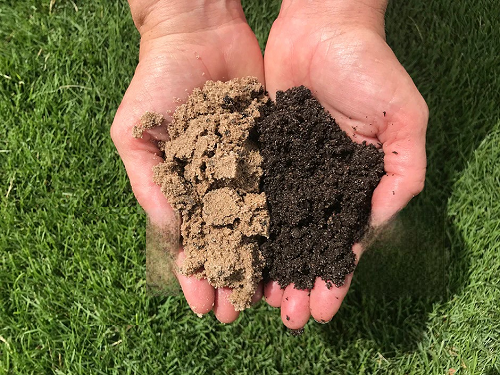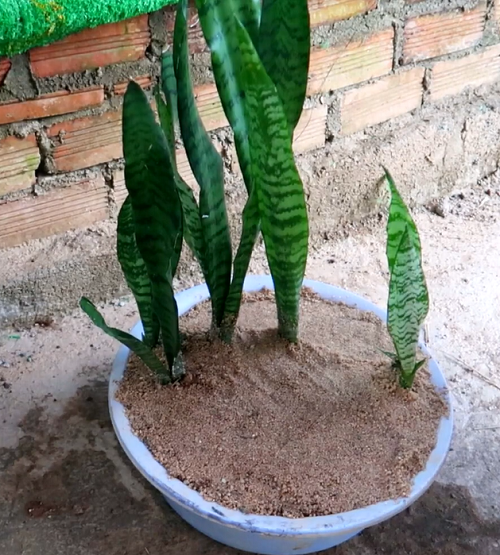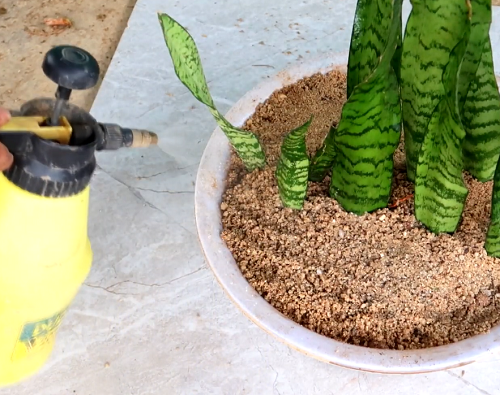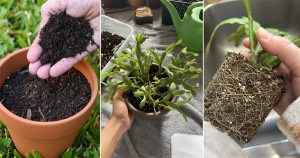Growing snake plant in sand might prove to be the perfect and easiest method for you after reading this article—Carry on!
Snake plants are tough, resilient, and able to thrive with very little care. But what if we told you that you could grow them in sand? Yes, sand! This isn’t just a beach day for your plants; it’s a different way to nurture them. Let’s find out how you can grow snake plants in sand and why it might be the simplest method for you.
Why Choose Sand for Snake Plants?
Sand offers fantastic drainage, which is a game-changer for Snake Plants. Unlike regular potting soil that can sometimes retain too much moisture, sand lets water flow through quickly, minimizing the risk of dreaded root rot. This quality makes it perfect for Snake Plants, which are particularly susceptible to overwatering. Plus, sand is easy to come by and simple to work with which is a good pick for both new and experienced gardeners alike.
Essential Materials Needed
Before you begin, gather all the essentials. You’ll need well-draining sand—horticultural or construction sand is best, as it’s free from salts and chemicals. Please, avoid beach sand, which can contain harmful substances. You’ll also need a pot with drainage holes, some pebbles for the base layer, and possibly some tools like a trowel and gloves. For enhanced drainage, you might mix sand with other mediums like perlite or coarse gravel.
Preparing the Sand for Planting

It’s important to sterilize the sand before use to eliminate any potential pests or pathogens. You can do this by baking the sand at a low temperature in the oven for about an hour. After sterilizing, consider mixing the sand with a bit of organic matter or perlite to boost its structure and nutrient-holding capacity. And, aim for a mixture of about 70% sand and 30% other organic materials like potting soil, compost to ensure good drainage while still providing some nutrition.
Planting Snake Plant Cuttings in Sand
Direct Transplantation into Sand
For those who like a straightforward approach, directly planting Snake Plant cuttings in sand works well. After cutting a leaf, let it dry for a day to form a callus, which helps prevent rot. Then, plant the cutting in moist sand, making sure it’s secure but not too deep. This method skips the water propagation phase and lets the plant develop roots directly in its final medium.
Here’s how to plant your snake plant in sand:
- Fill the pot with your sand mix, leaving a bit of space at the top.
- Plant the cuttings so they stand upright. You don’t want them tipping over!
- Water lightly—just enough to get things moist but not soggy.
Common Challenges and Solutions
Growing Snake Plant in sand does have its challenges, especially with watering and nutrient management. Sand doesn’t provide the nutrients found in soil, so fertilize your plant every few months with a balanced, diluted fertilizer. You need to watch out for signs of nutrient deficiency, like yellowing leaves, and adjust care as needed. If you notice any signs of root rot, such as mushy roots or a foul odor, just remove the affected parts and let the healthy sections dry out before replanting.
Benefits of Growing Snake Plants in Sand
One major benefit of using sand is its excellent drainage, which helps prevent the common issue of overwatering with Snake Plants. And, the increased aeration around the roots also promotes healthier growth and prevents soil compaction. Plus, the minimalist look of sand pairs beautifully with the sleek, upright growth of Snake Plants.
Wrapping Up
Sand offers a unique and low-maintenance option for growing Snake Plants. Whether you’re new to gardening or a pro, this method is worth trying out. So grab some sand and a Snake Plant cutting, and start planting! And don’t forget to share your experiences and tips in the comments below!









